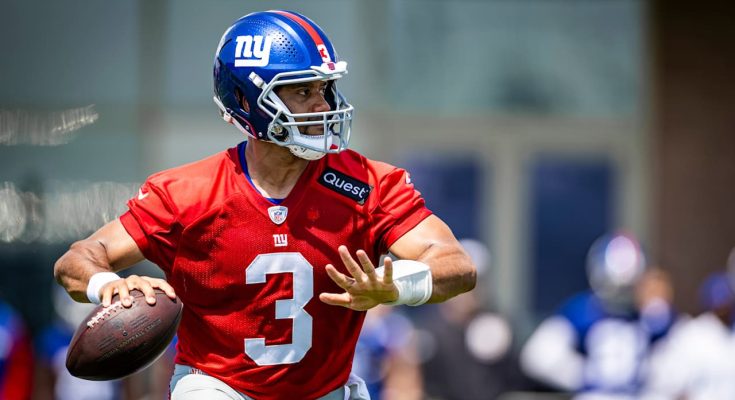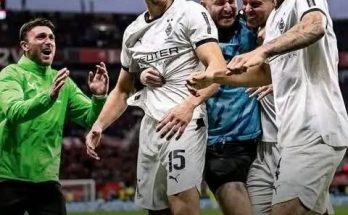ChatGPT said:
The New York Giants released their first unofficial depth chart ahead of Saturday’s preseason opener against the Bills in Buffalo, and while the term “unofficial” might suggest an evolving, flexible document subject to changes over the coming weeks, it still offers a substantial glimpse into the current pecking order across all three phases of the game. For fans, analysts, and even the players themselves, it’s a critical moment. It’s the first concrete outline of where each individual stands in the coaching staff’s eyes, following offseason workouts, minicamp, and the early portion of training camp. While the depth chart is merely a starting point for evaluation, it is nevertheless packed with insight into the decisions and progress made so far under head coach Brian Daboll and general manager Joe Schoen as they try to mold the roster into a playoff contender.
At quarterback, there are no real surprises. Daniel Jones retains his place as the clear-cut starter, having received the full backing of the organization in recent seasons despite a mixed bag of results. The Giants’ decision to extend Jones and continue investing in him has been a point of debate in New York sports circles, but within the organization, there’s no wavering. Jones has looked sharp throughout camp, and barring injury, he will be the signal caller come Week 1 of the regular season. Behind him, veteran Drew Lock has been listed as the primary backup, a nod to his experience and strong arm, while Tommy DeVito slots in as the third quarterback. DeVito became a fan-favorite last season with his gritty performances during a time of desperation, and his spot on the chart reflects a realistic battle for the backup role, but also signals that he has ground to cover to overtake Lock.
The running back position sees Saquon Barkley firmly planted as the top option, which was expected after he re-signed with the Giants in the offseason. Barkley’s importance to the offense cannot be overstated—his ability to run, catch, and pass protect makes him invaluable. Behind him, things get more interesting. Rookie Tyrone Tracy Jr. has cracked the second line, a sign that his transition from wide receiver to running back during his college years hasn’t gone unnoticed. His versatility and burst could carve him a niche role in the offense. Veterans Eric Gray and Gary Brightwell round out the group, though Gray has been dealing with minor injuries and Brightwell remains on the bubble, especially as roster cuts loom.
At wide receiver, the chart offers perhaps the most intriguing look into the roster. The Giants entered training camp with a crowded receiver room, and the depth chart starts to untangle that web. Wan’Dale Robinson, Jalin Hyatt, and Darius Slayton are listed as the top trio, a clear signal that the coaching staff sees them as core contributors. Robinson’s recovery from his ACL injury appears to be progressing well, and Hyatt has taken major strides forward after a promising rookie campaign that was marked by flashes of brilliance but some inconsistency. Slayton, meanwhile, remains one of the most dependable veterans in the locker room. Below them, Isaiah Hodgins, Sterling Shepard, and Bryce Ford-Wheaton make up the next tier. Hodgins’ size and hands give him a red-zone advantage, Shepard is a beloved figure within the team with a solid route tree, and Ford-Wheaton has impressed with his physical tools, though he still needs polish. There’s also undrafted rookie Ayir Asante, who has shown a knack for getting open during camp; his listing on the chart may seem like an afterthought, but it may foreshadow a push to make the roster if he continues trending upward.
The tight end room is as top-heavy as any on the team, with Darren Waller at the summit. If Waller can stay healthy, his presence will revolutionize the Giants’ passing game. His blend of size, speed, and catch radius gives Jones a dynamic option in the middle of the field. Daniel Bellinger, a capable blocker and developing receiver, slots in behind him, while Lawrence Cager and rookie Theo Johnson follow. Johnson, in particular, is one to watch. The coaching staff has raved about his athleticism, and while he remains raw, he could become a mismatch weapon if he develops quickly.
On the offensive line, the Giants appear to have settled on their starting five, at least for now. Andrew Thomas remains the unquestioned anchor at left tackle, bringing consistency and elite pass protection. At left guard, Ben Bredeson holds the spot, though second-year lineman Joshua Ezeudu is breathing down his neck. John Michael Schmitz, the 2023 draft pick, retains the starting center role and continues to grow into it with strong communication and an improving command of the line. At right guard, Mark Glowinski edges ahead of competition, though his hold on the position is far from secure. Evan Neal, the much-scrutinized former first-round pick, stays at right tackle. The Giants are still banking on his potential to shine through after an up-and-down start to his career. Depth pieces like Matt Peart, Marcus McKethan, and Shane Lemieux are still in the mix, but none have locked up significant roles yet.
Defensively, the depth chart reflects a combination of continuity and youth. Along the defensive line, Dexter Lawrence is the centerpiece—one of the league’s most disruptive interior linemen and an essential piece in the Giants’ front seven. He’s joined by veteran Leonard Williams and second-year tackle Jordon Riley, who has impressed with his size and motor. The rotation behind them features D.J. Davidson and Rakeem Nunez-Roches, both of whom provide stout run defense. Notably, rookie defensive end Darius Muasau has been listed on the third team, but he’s flashed enough potential during practice to be on the coaching staff’s radar as a potential rotational contributor.
At linebacker, Bobby Okereke is the headliner, brought in during free agency to bring toughness and range to the heart of the defense. He’s expected to be a sideline-to-sideline enforcer. Micah McFadden appears to be his running mate on the inside, with Darrian Beavers and Carter Coughlin waiting in the wings. McFadden’s instincts and play recognition have steadily improved, and he looks increasingly comfortable in the scheme. On the outside, Kayvon Thibodeaux and Azeez Ojulari sit atop the chart, a pairing that could wreak havoc on opposing quarterbacks if they stay healthy. Ojulari has battled injuries, but his burst is undeniable. Behind them, Boogie Basham and Tomon Fox add depth and special teams value.
The secondary sees some returning faces mixed with fresh competition. At cornerback, the Giants list Deonte Banks and Cor’Dale Flott as the projected starters. Banks, the second-year corner, was highly touted coming out of college and is beginning to put his physical gifts together with better technique. Flott, who can play both inside and outside, has worked hard to earn a top spot. Behind them, Tre Hawkins III and Nick McCloud offer size and physicality, though both need more consistency in coverage. Slot duties likely fall to Darnay Holmes, but he’s being pushed by newly signed veterans and camp standouts. The safeties include Xavier McKinney, the vocal leader of the secondary, and Jason Pinnock, who has quietly carved out a reliable role as a smart, sure tackler with range. Dane Belton and rookie Tyler Nubin round out the group and could see the field in sub-packages.
Special teams show no massive surprises, though the kicker battle is quietly worth monitoring. Graham Gano is listed as the starter, assuming he returns healthy from offseason surgery. At punter, Jamie Gillan continues to hold the lead, though his consistency remains under scrutiny. The return duties are currently assigned to a mix of players, with Jalin Hyatt and Eric Gray getting first reps on kick and punt returns, respectively. This will likely shift as coaches evaluate ball security and explosiveness during live preseason action.
Beyond the individual names, what this depth chart reveals is the balance between experience and youth that defines the Giants’ 2025 roster. Veterans are still central to the team’s identity, but young players from the last two drafts are increasingly pushing for meaningful roles. The front office has emphasized competition, and nowhere is that more evident than in the offensive line and secondary—two areas that were liabilities at times last year but have the potential to be strengths if the pieces click into place.
One deeper takeaway from this early chart is the kind of roster construction philosophy the Giants are leaning toward under Brian Daboll and Joe Schoen. Flexibility, speed, and positional versatility are clearly being prioritized. Players like Tyrone Tracy Jr., Deonte Banks, and Theo Johnson all fit the mold of athletic prospects who can line up in multiple spots. That’s not just a coincidence. In a league where matchups and injury management are week-to-week puzzles, having athletes who can be moved around provides critical optionality.
Still, it’s important not to overreact to this first release. Coaches often use early depth charts to motivate players or reflect seniority rather than strictly performance. That said, every name listed, from first to fourth string, is under the microscope. For the coaching staff, the chart is both a blueprint and a litmus test. For players, it’s either confirmation or motivation. With the first preseason game against Buffalo looming, there’s no more hiding. Snap counts, tape, and execution will determine the next round of updates, and ultimately, who makes the final 53-man roster. The Giants have made their initial declarations, and now, the real evaluations begin.



